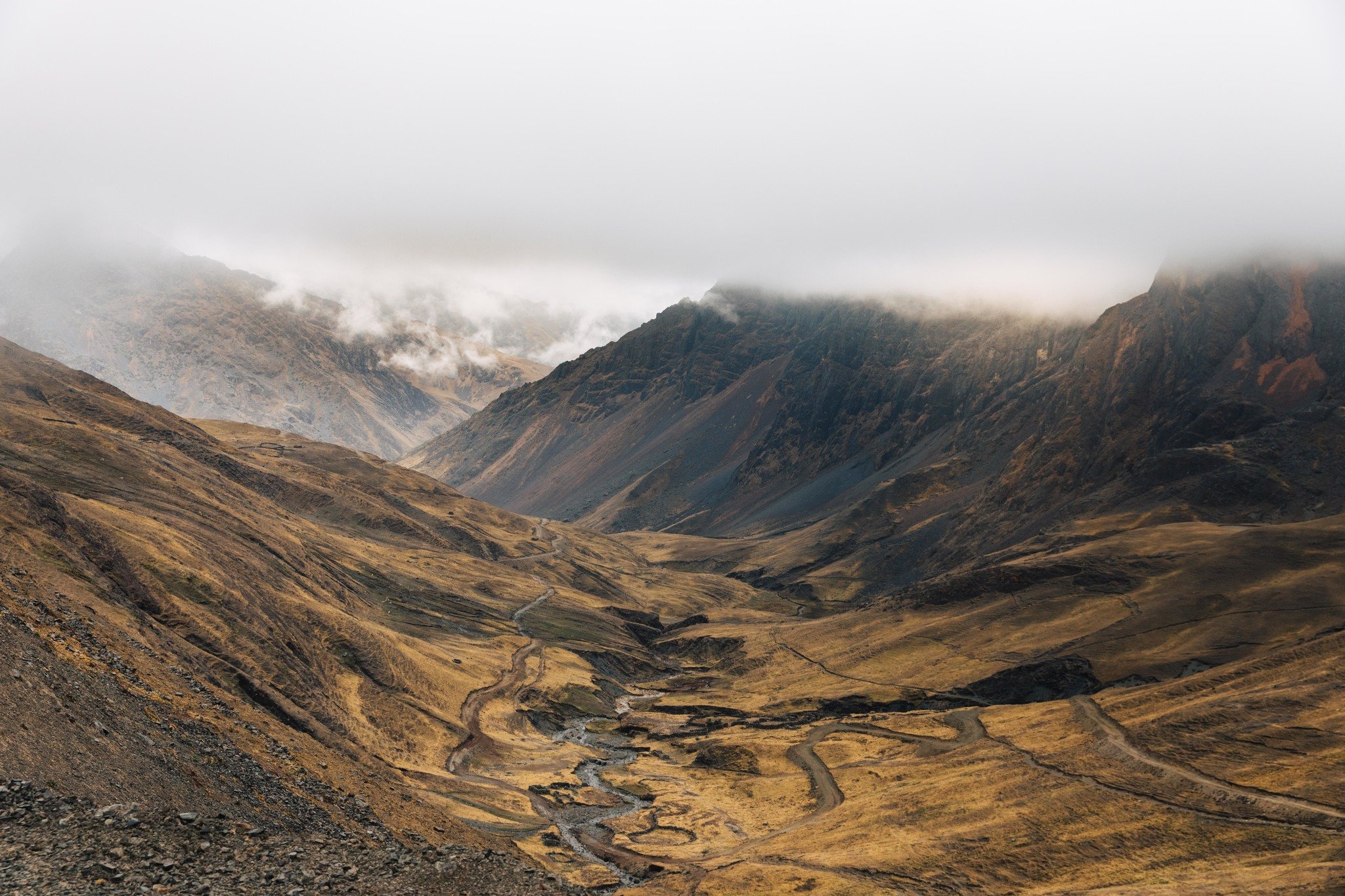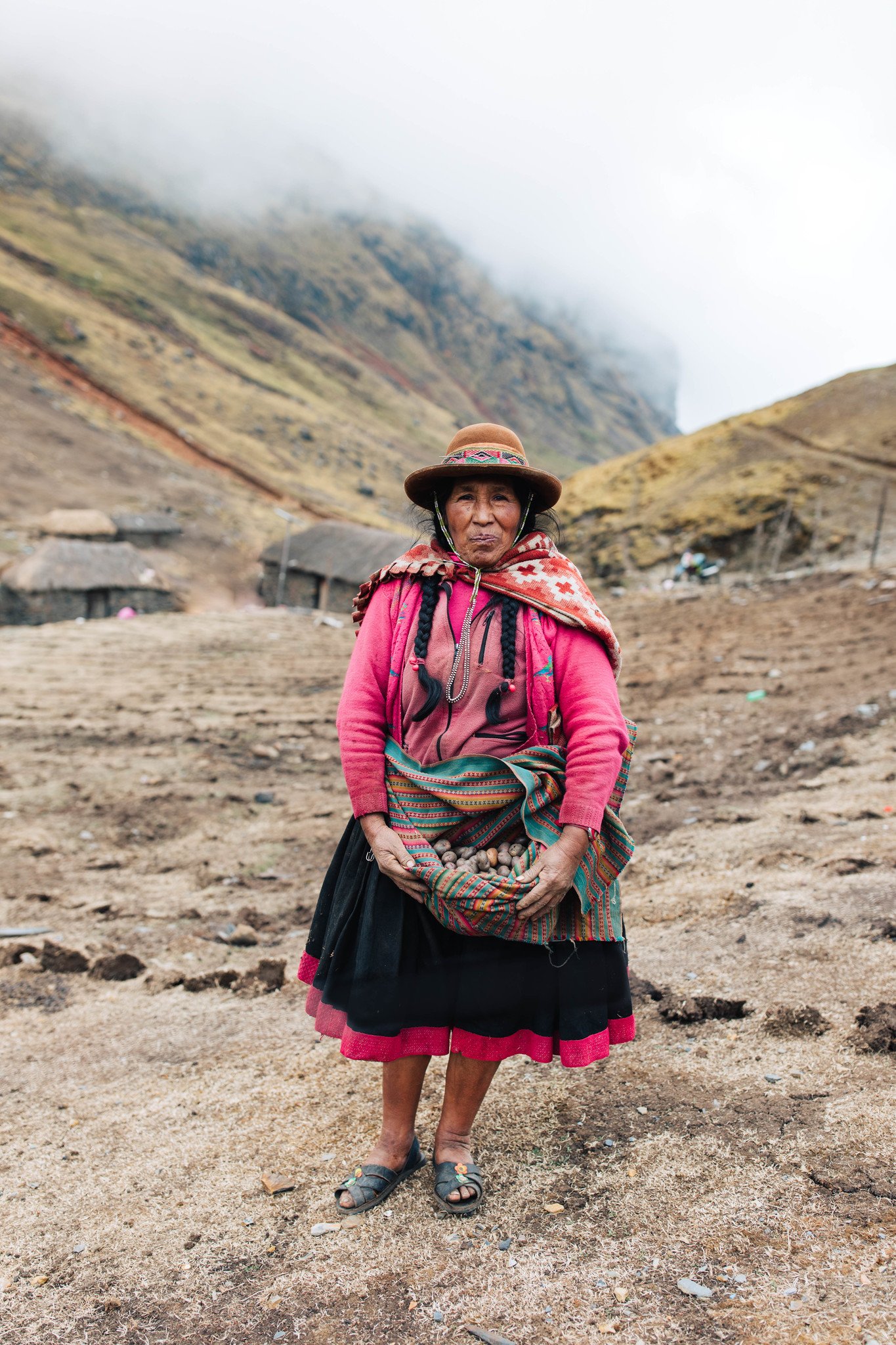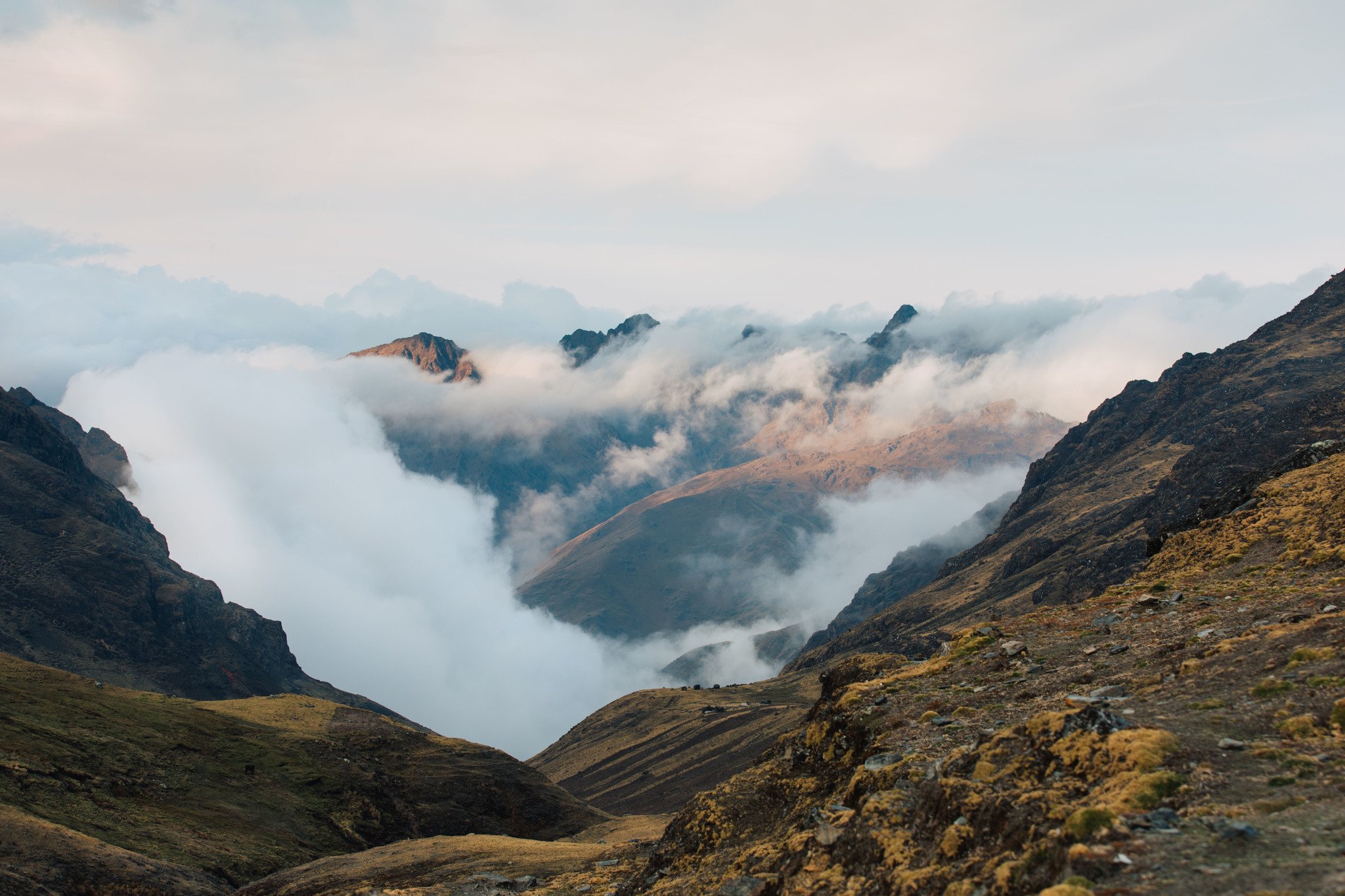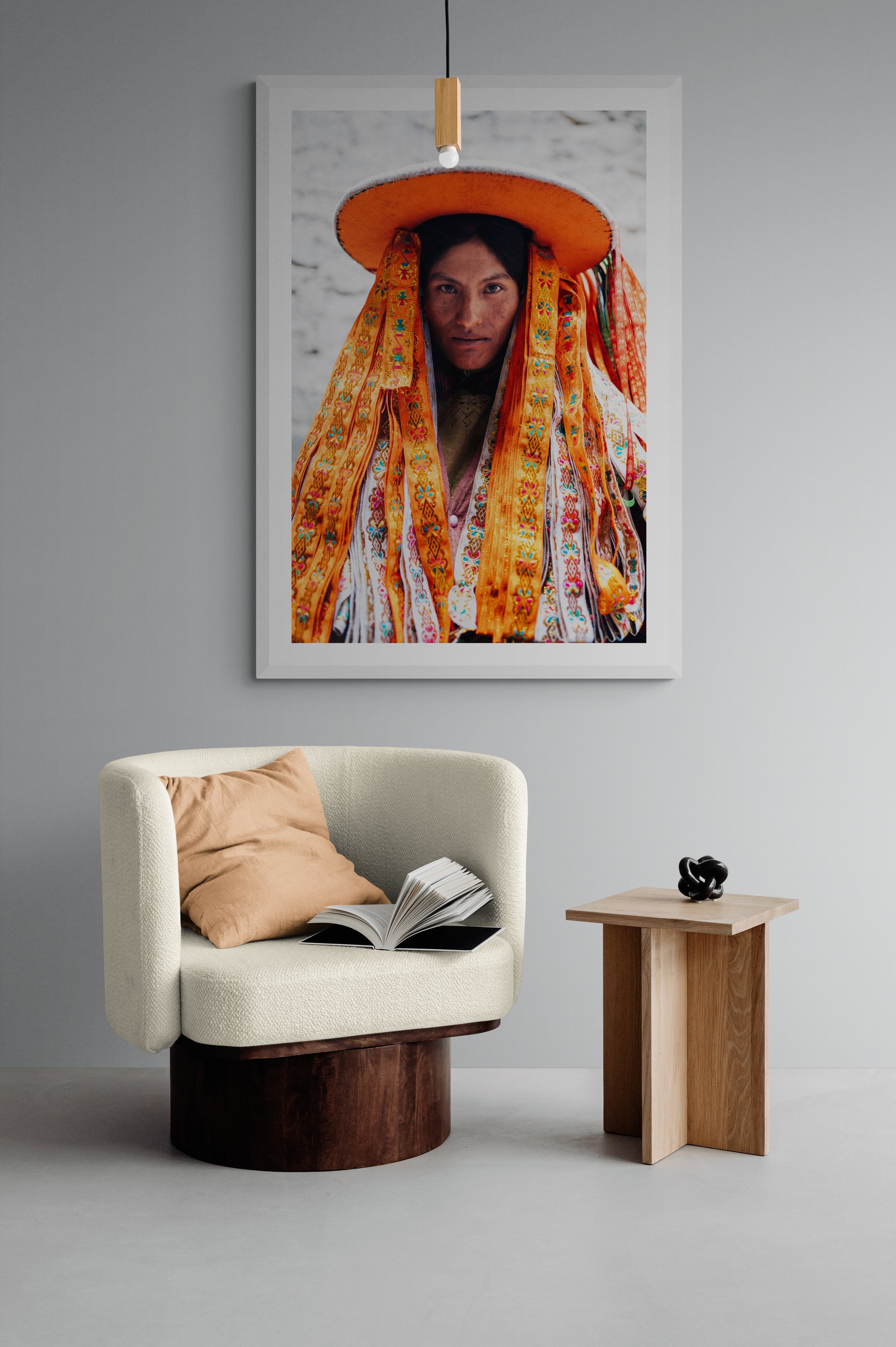
último ayllu inka
The Q’eros
In 2022, I spent 5 days with the indigenous people of Q’eros in Peru. After months of planning, two flights and an 8 hour drive on some of the most dangerous dirt roads, we arrived at the remote village of Qochamocco at an altitude of 4400 metres. This is a story about the Q’eros people and their traditional way of life in an ever more becoming modern world.
“Noisy alpacas in front of our stone house wake me up on the first morning. It’s 5 a.m. and I decide to get out of my warm sleeping bag. Layered up with warm clothing, I face the freezing temperatures outside and just barely get past a white rooster striking at me. In the distance, I notice a Q’eros family herd their alpacas to the upper located mountain above Qochamocco. I decide to walk with them and witness some of the most beautiful sights I’ve ever seen. It doesn’t take long before I’m confronted with the challenges of the high altitude. Completely out of breath, I decide to head back to our stone house.”
The Q’eros
The Q'eros people are an indigenous community that lives in the Andes mountains of Peru. They are said to be one of the last remaining groups of Inca descendants, or also called último ayllu inka. The remote villages of the Q’eros community are located in the Cordillera Vilcanota range, the highest mountain chain in southeastern Peru. The community we visited live in the village of Qochamocco, at an approximate altitude of 4400 metres. Q’eros live a remote life in the clouds, at one with nature and in co-existence with the elements.


At one with nature
Mist and clouds are a daily presence in the lives of the Q'eros people living in the high Andes of Peru. The mist, coming from the Amazon, is a phenomenon that is both beautiful and unpredictable. It can appear and disappear quickly, moving in and out of the valleys and peaks with the wind and weather patterns. It affects everything from the growth of crops and the movement of animals to the timing of important cultural events and ceremonies. The air is thin and cold at these high altitudes, and the terrain is often treacherous and unforgiving.
The sun is a significant aspect of the daily routine in the mountains, as it determines when Q’eros people start and end their work activities. Days in Qochamocco start around 04:30, just before sunrise. These morning sights are quite extraordinary: smoke coming from the stone houses and frozen grounds from the night’s cold.
Living at high altitudes, it is not easy for Q’eros communities to grow crops. Q’eros’ diet therefore mainly consists of potatoes and occasionally an alpaca is slaughtered. Nothing of the animal goes to waste: the wool is used for clothing, the meat for food, the skin for mattresses, and the rest to make broth.
The medicine of the Q’eros mostly follows the tradition of the Incas. They use plants and herbs in times of sickness and to treat various diseases. In the village of Qochamocco, Martin invited us into his home where he shared his knowledge about medicinal plants. He spends a lot of time searching for plants in the Andes mountains. Medicinal plant knowledge is passed down through generations.


Llama and alpaca herders
Q’eros are llama and alpaca herders. Llamas and alpacas are highly valued by the Q'eros people for their wool, meat, and ability to serve as pack animals in the rugged terrain of the Andes Mountains. At night, alpacas are kept in a so called ‘corral', a circle wall of stones. During baby alpaca season, the group tends to be threatened by pumas on the hunt. Q’eros men told us dogs bark at night to alarm them about pumas coming from lower located mountains.
Q’eros perform traditional ceremonies for their llamas and alpacas to boost their fertility and call on their protection. During a ceremony, alpacas or llamas are given colourful adornments for the ears. The Q'eros people have a deep respect for these animals and have developed a close relationship with them over centuries of living in the high Andes.
Traditional weaving
Weaving is an important part of Q'eros culture and has been passed down through generations. Q'eros women use a backstrap loom and alpaca bones as picks to weave their textiles, a technique that has been used in the Andes for thousands of years. The process is slow and textiles can take months to complete, but the result is a beautiful, tightly woven textile which often carry deep cultural and spiritual significance.
The designs of Q'eros textiles are often inspired by nature, with patterns and colors that reflect the Andean landscape. They use alpaca wool and natural dyes made from plants and minerals to create the bright and bold colors that are characteristic of Andean textiles. The textiles may also feature symbols and imagery that represent the Andean cosmovision, such as animals, mountains, and stars.
In addition to being a cultural practice, weaving is also an important economic activity for Q'eros women. They sell their textiles in local markets and to tourists, providing a source of income for their families. The sale of textiles also helps to preserve traditional Andean weaving techniques and support the continuation of Q'eros culture.


Despacho offerings
Q’eros perform offerings to Pacha Mama, Mother Earth, and to the Apus, mountain spirits, in exchange for the well being of their animals, crops and community. They perform so called despacho ceremonies. In the ceremony, a special offering is created using various symbolic items such as flowers, leaves, seeds, and other materials. Each item represents a specific intention or prayer, and the items are carefully arranged in a specific pattern on a piece of paper. The offering is blessed through ritual chanting and playing the flute. The despacho is then burned as an offering to the earth and the spirits, and it is believed that the intentions and prayers contained within it are carried into the spiritual realm and manifested in the physical world.
“I suddenly get waken up in the middle of the night by heavy wind. I’m in bed hoping our roof doesn’t blow off. The loud noise of our door jamming open by the wind eventually gets me out of bed. I grab my backpack in the corner of our stone house and push it against the doorway to get the wooden door to finally shut. While I close the door, I notice light shining through the door of the neighbouring house where Q’eros men are playing the flute and singing songs.”
Q’eros in a modern world
While I felt incredible gratitude to visit the Q’eros, I also felt conflicted. Shouldn’t we ‘westerners’ leave these indigenous communities alone so they can live their life undisturbed? A tough question and one I asked myself over and over. I also discussed it with the Q’eros and figured we are past the point of indigenous communities living completely isolated from the modern world (although some do still exist today). After living in isolation for centuries, a road connecting the outside world has reached the Q’eros villages in the Andes mountains in 2017.
The idea of ‘isolated’ indigenous communities and the ‘modern’ world finding each other is unfortunately no longer inevitable. While we shouldn’t necessarily focus on preventing this, we should make sure these communities can thrive in a world of globalization. More specifically, it is important that indigenous communities like Q’eros can integrate into the modern world while maintaining their cultural identity, practices and traditions.
It is without a doubt however that visiting these communities should come with great responsibility and respect. The Q’eros invited me as a guest into their community and were proud to show their culture. Most of the photographs I captured were taken in the last days of being there. In my first moments with the Q’eros I barely picked up my camera as I wanted to get to know each other and build meaningful connections first and foremost.
My aim with these photographs is to mainly bring awareness and hopefully make a small contribution to the preservation of Q’eros culture. Their customs, traditions, land and languages are on the verge of disappearing if we are not careful. Threatened by modernisation, road building, mining, outward migration and climate change, the Q’eros fight for their future existence. It’s important to document their way of life and remind the world that these communities have to be protected at all costs.




Lessons from Q’eros
There is so much to learn from the Q’eros. They are the wisdom keepers of the Andes. Their lasting relationship with mother nature is remarkable. Equally so are the strong relationships Q’eros maintain with their community. Concepts of ayni, the importance of reciprocal sharing, and animu, awareness of spiritual life in all things, shape their interactions with each other and their environment. Q’eros once again show that materialism doesn’t bring happiness. Living one day at a time and at the pace of nature. My time spent with the Q’eros is something I will never forget and hold dear to me for the rest of my life.
Q’eros Prints
You can support the Q'eros by purchasing my prints. For each of my Q'eros prints being sold, I am donating 10% of the net proceeds to Willka Yachay, a non-profit organization dedicated to helping the indigenous community of Q'eros thrive in the modern world.













